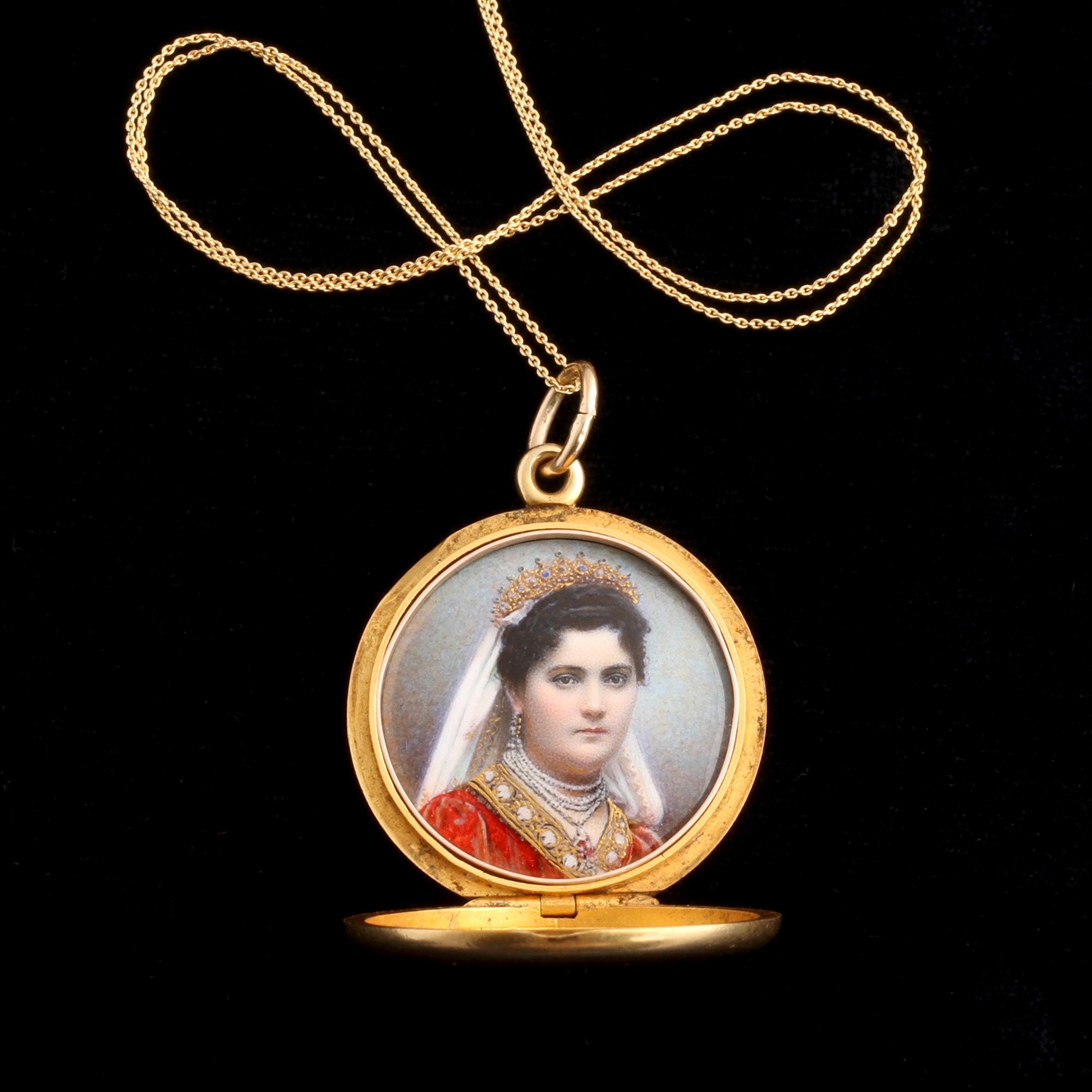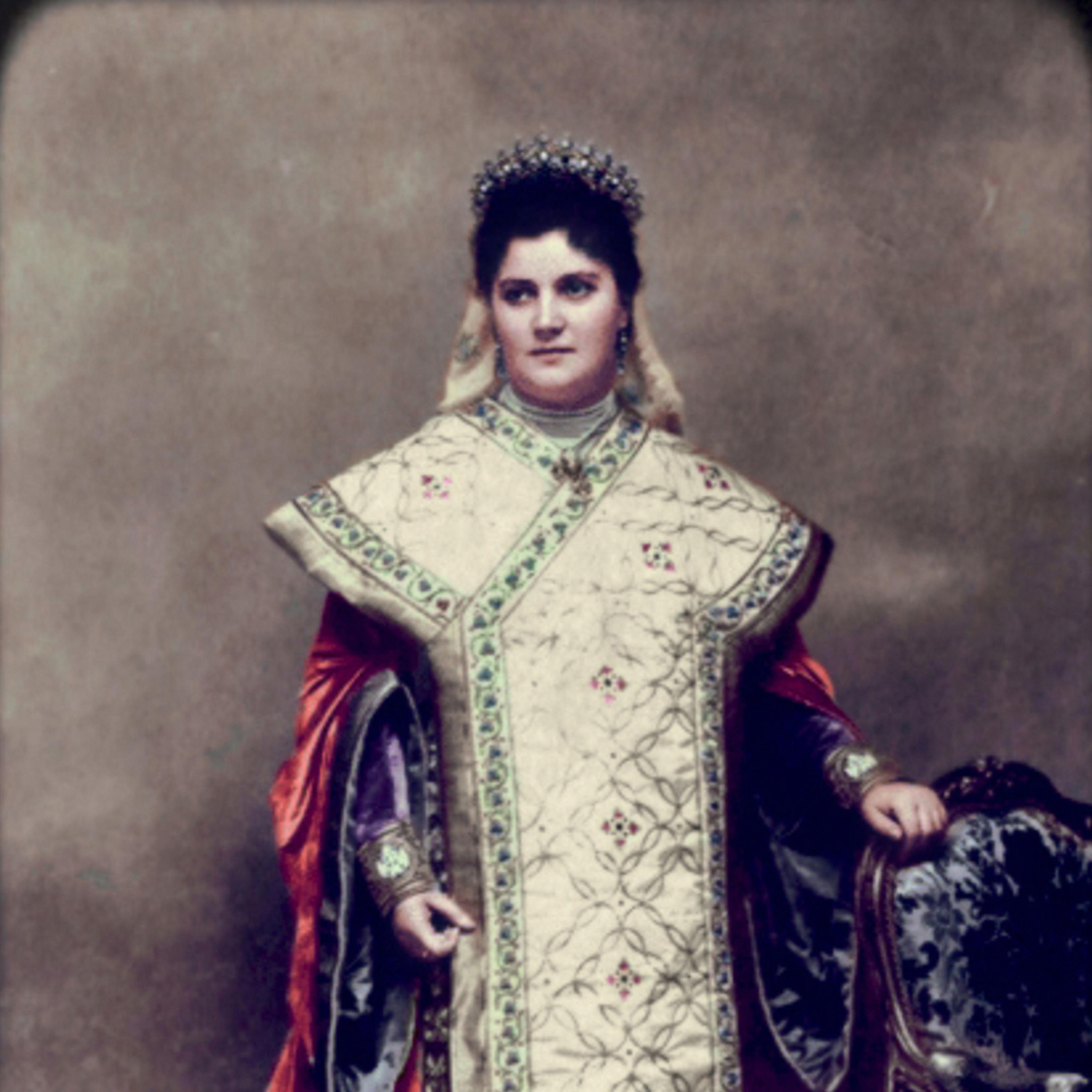A beautifully made commemorative locket with a royal cipher beneath a crown. The reverse side features the date December 1862. When we acquired this locket, we thought the mystery that needed solving was the identity of the regal woman in the portrait. We now believe that she is Queen Draga of Serbia (check out the portrait of the queen in the product images), however, a mystery still remains. Queen Draga, an unpopular monarch who was assassinated along with her husband the King in 1903, was born in 1864, two years after the date on the locket. Perhaps it was am important date in Serbian history? In the monarchy? If anyone knows the answer, we are all ears.
thedetails
- Materials
18k gold (tests), enamel, portrait miniature, new 14k gold chain
- Age
Dated December 1862
- Condition
Very good - minor surface wear commensurate with age and use
- Size
1 3/8" length including the bale, 1 1/16" diameter, 18" chain
Need more photos?
Send us an email to request photos of this piece on a model.

Aboutthe
VictorianEra
1837 — 1901
The Victorians were avid consumers and novelty-seekers, especially when it came to fashion, and numerous fads came and went throughout the 19th century. In jewelry, whatever fashion choices Queen V. made reverberated throughout the kingdom. The Romantic period reflected the queen’s legendary love for her husband, Albert.
Jewelry from this period featured joyful designs like flowers, hearts, and birds, all which often had symbolic meaning. The queen’s betrothal ring was made in the shape of a snake, which stood for love, fidelity, and eternity. The exuberant tone shifted after Prince Albert passed away in 1861, marking the beginning of the Grand Period. Black jewelry became de rigeur as the Queen and her subjects entered “mourning,” which at the time represented not just an emotional state, as we conceive of it today, but a specific manner of conduct and dress. She wore the color black for the remainder of her life, and we see lots of black onyx, enamel, jet, and gutta percha in the jewelry from this time. Finally, during the late Victorian period, which transitioned along with a rapidly changing world into the “Aesthetic Movement”, there was a return to organic and whimsical motifs: serpents, crescent moons, animals, and Japonaisserie designed for the more liberated “Gibson Girl”. During the second half of the 19th century, America entered the global jewelry market, with Tiffany and Co. leading the way. Lapidaries continued to perfect their techniques, and the old European cut emerged toward the end of the Victorian period. The discovery of rich diamond mines in South Africa made the colorless stones more accessible than ever before.
please note:Terms of Sale
Antiques can be returned unworn and in original condition within 10 days of delivery for an exchange or refund minus the cost of shipping. Once a piece has been altered, including ring re-sizing, it is FINAL SALE.





